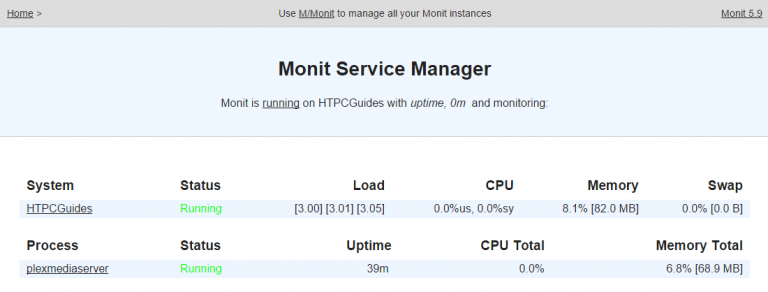
- #Restart plex media server on ubuntu install
- #Restart plex media server on ubuntu update
- #Restart plex media server on ubuntu upgrade
- #Restart plex media server on ubuntu tv
Close it and start configuring your Plex media server. On the new page that appears, you will see the Plex Pass pop-up window that shows the various subscription rates. When done, scroll to the bottom of the page and click GOT IT! to get started with Plex Media Server. Click Enable DRM to allow plex Web UI to work correctly on your system. You will also see an option to enable DRM on your browser. This page gives you a detailed explanation of how plex works. After a successful login, you will see a page similar to the image below. You can SignUp using social media accounts like Facebook, Apple, or email on the First Page. We need to create a user to run the plex server or log in to an existing user account.
#Restart plex media server on ubuntu tv
However, after a few seconds, it will direct you to the Plex Tv official web page where you will be required to log in as shown below.


OR Tip: When the page first loads on your browser, you will see the Plex logo. To access the Plex web interface, use the URL below. Let’s now look at how you can configure plex using the WebUI. sudo ufw statusĪccess and Configure the Plex Media Server To verify whether port 32400 was enabled, execute the command below. Then add the Plex Media Server Port 32400 using by running this command: sudo ufw allow 32400 By default, it’s enabled, but if not, execute the command below to enable UFW. To use this service, you must also have your UFW (Uncomplicated Firewall) enabled. Execute the commands below on the Terminal. Now, we need to enable the Plex service to automatically start on boot whenever we boot or restart the system. In case you find that the service is not active, type the commands below to start the Plex Media server: sudo systemctl enable -now plexmediaserver sudo systemctl status plexmediaserverįrom the image above, you can see that the Plex Media Server service is already running on our system. You can verify that by executing the command below. After a successful installation, the plexmediaserver service should start automatically. That allows us to keep the currently installed version of plexmediaserver.list and proceed with the installation.
#Restart plex media server on ubuntu install
#Restart plex media server on ubuntu update
It’s highly recommended that you update your packages before installing the plex. echo deb public main | sudo tee /etc/apt//plexmediaserver.list Next, execute the command below to add the Plex GPG key.

sudo wget -O- | gpg -dearmor | sudo tee /usr/share/keyrings/plex.gpg Open the Terminal and execute the following command. Next, add a plex repository or create a repository file to get pulls from the plex repository. Run this command: sudo apt install apt-transport-https curl wget -y
#Restart plex media server on ubuntu upgrade
sudo apt update & sudo apt upgrade -yĪdd the required packages to run plex. Update your packages and check for available updates using this command. To begin, open a terminal window by pressing Ctrl + Alt + T or searching for Terminal from your launcher menu. Still, to ensure you’re always up-to-date with any necessary bug fixes and security patches, it’s best to download Plex’s official Linux installer script and use that for installation. There are several ways to install and configure Plex on Ubuntu, including using a. If not logged in as root, then prepend sudo to each command. All commands should be run as root unless otherwise noted. You can follow along with your hardware or use a cloud server.Īt least 2GB of memory will be needed for one streamer, although 4GB would be ideal, and 8GB is better yet.Īn SSD drive will improve performance as well. You will need an active internet connection for most of these steps and about 40 minutes.


 0 kommentar(er)
0 kommentar(er)
